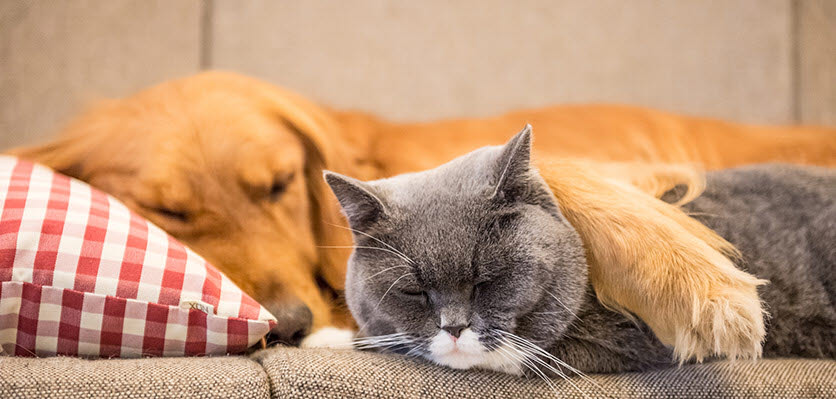Creating an enriching environment for your pet

Providing your pet with an enriching environment means providing them with a home that meets their specific needs and allows them to carry out fun (and safe) activities throughout the different stages of their life.
Every pet is different and will have their own preferences so it’s important to give them a choice about what they want to do and have predictable routines for these activities. Even more importantly, there are big differences between species so what suits your dog, cat, bird or pet pig is vastly different.
So, how do you go about providing your pet with an enriching environment?
1. Supply access to basic resources such as food, water and the toilet
All animals like to have these supplied in their own ‘zones’ no matter how many pets you have, and most like to access these resources in an area where they will not be disturbed or frightened by other animals, or by household appliances, such as dishwashers. Safe, low traffic areas are best. Consider the type of food you will supply (dry, tinned or fresh) and how they will access it, for example for a dog, it might be in a toy that encourages foraging behaviour. Will you provide them with still or running water? How do they access the toilet? Doggy doors, cat flaps and litter tray location are all important aspects to consider.
2. Consider structural features
The physical environment is very important for your pet. Minimalistic homes might please you, but may not please your pet. Cats and birds love three-dimensional living. Height really pleases them, so access to perches, window sills, scratching poles and climbing frames is important. They also like places to hide and ‘survey’ without being seen. Most dogs like to chase and chew and most pigs like to forage and wallow in mud. Consider how your house and garden can provide these opportunities for your pet.
3. Look at social interactions
In any social situation it is important to avoid competition between animals, which might lead to resource guarding behaviour. They should all have their own designated area, which includes everything they need, to avoid competitive behaviour developing. Many animals can be quite particular, preferring to interact with others in their own environment and on their own terms. They can also be quite resistant to accepting others into their established social group, especially if there has been a lack of early socialisation, so don’t be surprised if your decision to get your pet a ‘buddy’ doesn’t help. Speak to your veterinarian if you are concerned.
4. Human interactions
Routines are calming for our pets, but often our days at work, or away from home, are altered by other demands, and the routine is broken. Try to establish positive rituals for your pet (like keeping them calm or giving them a treat to chew as you depart), and make time for regular play and grooming sessions. Cats prefer brief interactions of petting and grooming. Think of their play preferences – do they like to chew or chase – and find toys to suit their needs.
5. Audio-visual enrichment
Your pet may love to watch TV, especially when other animals come on the screen. Leaving the radio on can be calming for your pet. Cats love to look out of windows and watch birds or other animals.
6. Olfactory stimulation
Exciting new smells can be really interesting for your pet. Scent trails can be set up for your dog to track, or play hide-and-seek with a smelly sock! Indoor cats love herbs, such as catmint and catnip, or just a box full of leaves from the garden. Synthetic pheromones are also available to calm your dog and cat.
Any changes you make to your pet’s environment should be done gradually to avoid upsetting them. Ensure any new toy or equipment is safe for your pet and when you give them a new toy, play with them to show them how it works and have fun together.
